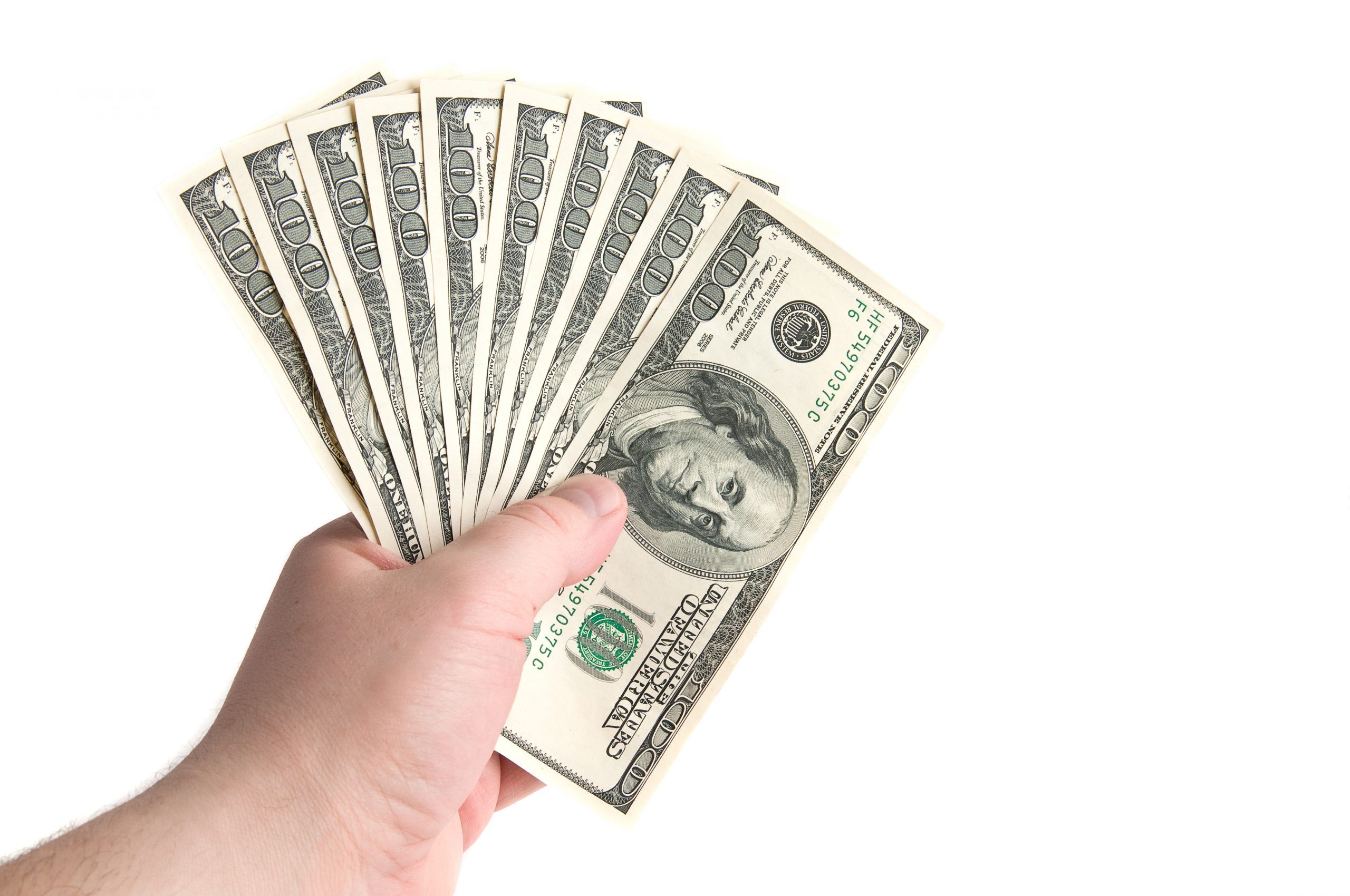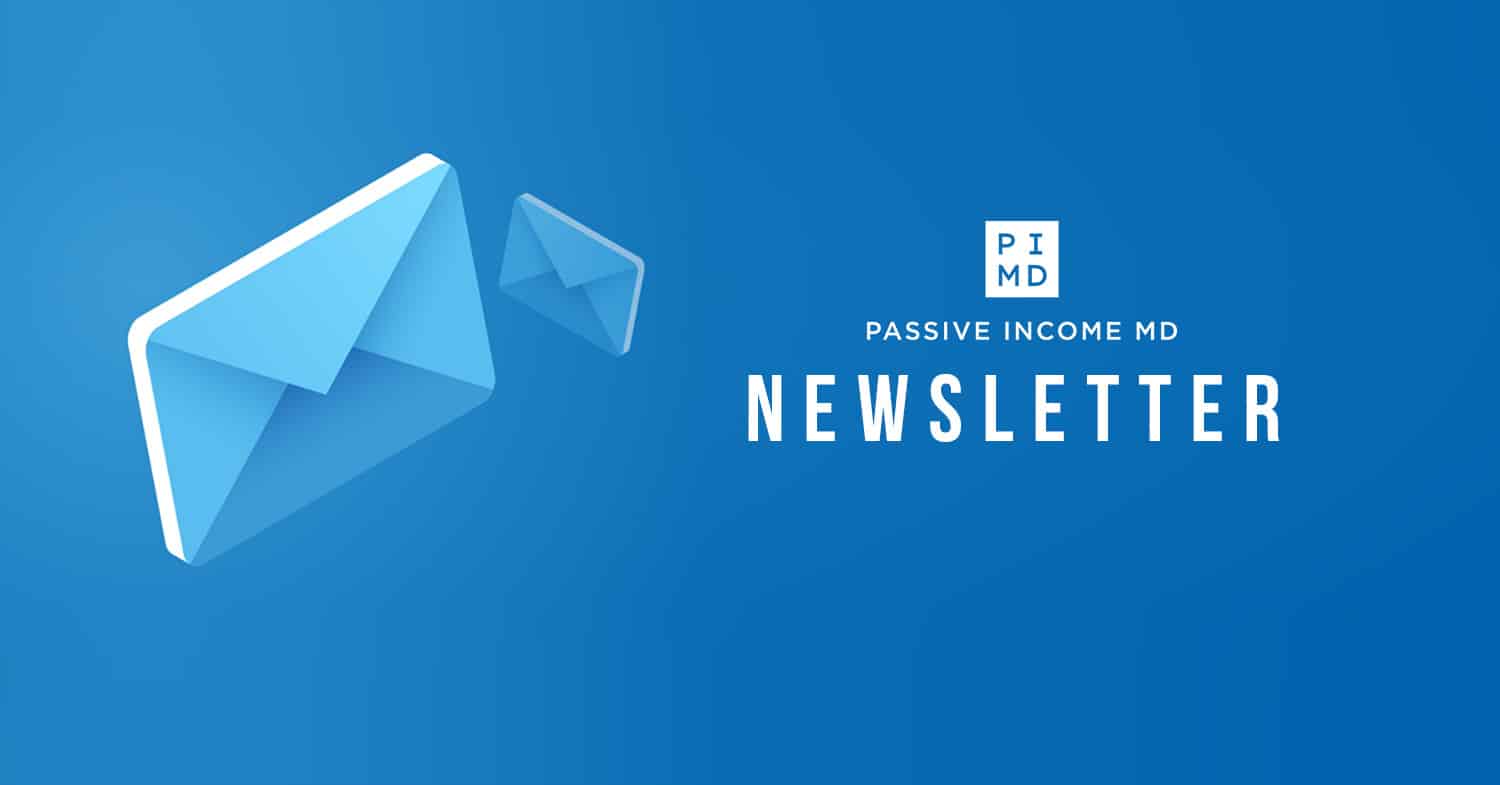
7 Ways For Physicians to Make an Extra $1000 a Month
This post may contain links from our sponsors. We provide you with accurate, reliable information. Learn more about how we make money and select our advertising partners.
What would you do with a little extra income each month?
Perhaps it wouldn’t change your life very much. You might put it toward paying your student loan debt off faster. Maybe you’d take an awesome trip with the family. Maybe you’d invest it or use it to grow your savings.
Whatever the case, there’s no doubt in my mind that we’d all love to have a little extra money coming in. This is why the idea of the “side hustle” is becoming more and more popular among physicians.
Now, of course, if we want a little extra income, most of us could just work more; pick up an extra shift or two–or four. But then we’re just trading time for money, and that defeats some of the greatest benefits that a side hustle can bring–especially one that is more passive.
A side hustle that produces real passive income can create income that grows over time without any effort, other than the initial due diligence and time of setting up the investment. Side hustles like these continue to pay off well–and long into the future.
It may even turn out that the income is more tax-efficient than the income from our current day jobs, so that what’s in your pocket at the end of the day is greater.
Yes, a side hustle can open a world of opportunity, growth, and freedom. But you have to walk before you can run, and so this post is going to focus on how you can get started.
 We know that goals are important, so if having a bit of extra income from a side hustle sounds good to you, a great starting goal would be to produce an extra $1,000 per month outside of your normal clinical work.
We know that goals are important, so if having a bit of extra income from a side hustle sounds good to you, a great starting goal would be to produce an extra $1,000 per month outside of your normal clinical work.
Of course, no stream of income will be easy, and a side hustle is no exception. A successful venture is fueled by three things: money, time, and effort. I like to say that it takes either a lot of one of those things, or some combination of the three.
All of the following ways to make an extra $1,000 per month will need some combination of those three things. Also, in order to qualify for this list, that extra income has to be actual cash flow that hits your bank account every month, and that can then be spent.
It also has to make sense for physicians who are short on time. Sure, you could drive Uber and make an extra $1,000 per month, but at that point, you might as well work more hours in the hospital.
So, with all that in mind, here are the top 7 ways I’ve found to hit that $1,000-per-month mark with a side hustle.
Real Estate
1) Become a hard money lender
Wouldn’t you love to be the bank? You lend out money and get interest payments monthly in return. Then, at the end of the loan term, you get the initial amount borrowed returned. It’s a win-win!
That idea may sound fanciful, but that’s essentially what you do when you’re a hard money lender. In these situations, the potential borrowers are often people trying to fix and flip homes.
They need access to capital quickly and for relatively short terms. Conventional banks won’t lend in situations like this, so flippers need to look elsewhere for the capital. This is where hard money lenders come in.
Due to the nature of the fix-and-flip business, interest rates are higher, often 10% or more. This works because flippers expect to have much higher returns than ten percent.
It works well for lenders because the income can be completely passive. Lend out your money and expect checks in the mail. And if the borrower defaults on the loan, the property is there as collateral; you’re able to foreclose on it and take the property.
No one loves that scenario, but at least the loan is backed by something real: a property.
The challenge becomes knowing whom to lend to and where to find these types of opportunities.
I’ve done this in the past, through crowdfunding platforms like Peerstreet and RealtyMogul. I’ve also invested in funds that do this on a larger scale and allow you to diversify your holdings. That way, if one borrower defaults, you have other loans in the fund to offset the loss.
Plus, they’re professionally managed, so you don't have to worry about going after a defaulting borrower yourself. I’ve invested in one such fund through the platform Alpha Investing.
Whatever the route, it’s not uncommon to see returns of 8-10% with hard money lending. So if you want to create $1,000/month ($12k a year), simply invest $120,000 at 10% return, and you’ve hit that goal in one investment.
2) Invest in a syndication / fund
A syndication is the pooling of money to purchase a rental property (usually an apartment building). A professional runs the deal, so as a passive investor, you perform your due diligence, invest, and wait for the checks to come.
A fund is a way to diversify beyond one single property. A fund will purchase multiple properties, in essence running multiple syndications, to diversify your holdings. There could be an extra fee associated with investing in a fund versus a syndication, but you have the benefit of diversification, which could definitely minimize the risk.
When you invest in these types of deals, you should be looking for the cash distributions they’re looking to make, as well as their timing. It depends on the deal, but many will distribute funds to you on a quarterly basis.
With syndications and funds in this current market, a preferred return of 8% is common (preferred return simply refers to the priority with which profits are distributed to the investors and sponsors who run the investment). As a limited partner or investor with a preferred return of 8%, that means that you’ll be receiving 8% before sponsors receive any sort of share of the profits.
In this case, placing $150,000 into one of these investments (or spread over multiple) will get you to that goal of $1,000/month in cash flow.
However, as an investor in a syndication or fund, you also get to participate in the upside of the deal. So while it might seem like you only receive $12,000 in cash per year, your equity in the property continues to gain in value, and that will be realized when the property is sold. The expectation is that you’ll receive a large lump sum payment when the property is sold.
As a side note, the returns here are typically tax free, because on your tax return, your profit will be very little, or even negative, due to some of the massive tax benefits of real estate investing (like depreciation). This, coupled with the returns mentioned above, makes funds and syndications a very effective means of passive income.
If you'd like to learn more about how to confidently invest in passive real estate opportunities, check out Passive Real Estate Academy. The next class is about to begin soon, join the waitlist for a discount.
3) Buy your own rental property
The concept is simple. Purchase your own rental property and then wait for the point at which the cash flow to equal $1,000 a month. After all, cash flow from rental properties is simply a calculation. Take income, subtract expenses, and you have your net cash flow.
Income in this case is mainly rent and perhaps some other things like parking spots or laundry.
Expenses include mortgage payments, insurance, taxes, management fees, maintenance, HOA, et cetera.

Finding a property that produces a cash flow of $1,000 per month, then, is simply a numbers game. Different parts of the country have different cash flow ratios. It also depends on how much you use for a down payment. Without a mortgage, it’s quite easy to cash flow–mortgage payments are usually the largest part of any sort of rental expenses.
I often see cash-on-cash returns for rental properties in the 8-10% range. But again, this is highly dependent on where the property is located. I live in Los Angeles, and you’re not going to see numbers like that financing a property here.
As a quick reminder cash on cash return is calculated using the following equation:

So to achieve an annual cash flow of $12,000 and using a cash on cash return of 10%, you would be investing $120,000 to make that happen.
Well, it may or may not happen with your first property. You might purchase one property a year and achieve that goal as well.
Owning rental properties can be a great source of passive income. But even more than the options we’ve seen so far, location is crucial.
4) AirBnb / Vacation Rentals
Even though many parts of the country are cracking down on short-term vacation rentals, it’s still a booming business in certain areas.
I know people who are renting out single rooms in their own homes and are easily hitting $1,000 per month. Others I know take a weekend trip, rent their places out while they’re gone, and make $1,000 per month just from those few days.
If you have a space readily available (or even just sometimes available), services like AirBnb can be very lucrative.
Stocks
5) Invest in dividend stocks
I often think of stocks in very simple terms: their values that go up and down depending on what’s going on with the company (profits increasing, market tanking, etc.) and the value of the company perceived by investors. All of that gain or loss is simply potential–until you actually sell the stock.
However, there are stocks that actually provide ongoing cash flow. They’re known as dividend stocks. These are stocks that simply pay out dividends, usually on a quarterly basis. As the company accumulates cash, it redistributes it to investors.
A dividend yield will tell you how much an investor could earn from a stock. For example, if the dividend yield is 5% and a stock is trading at $100, the annual dividend is typically $5.
So, it depends on how many stocks you own and whatever amount the company decides to distribute. If you’re looking for monthly cash flow through dividend stocks, you’ll likely want to pick ones that historically pay out consistent dividends to their investors.
Let’s say you’re able to find a very solid stock that returns 4%. At that point, it’s simply a numbers game to calculate what a typical dividend is based on the stock value, and then how many shares you need to own.
For example, if it returns 4% at a stock value of $100, it would return you $4 per share per year. Since we’re looking for $12,000 a year, you’d have to own 3000 shares of a stock that’s worth $100. If you bought it as a lump sum, that’s $300,000.
That’s a decent up-front purchase, but it doesn’t get much more passive than dividend stocks.
Surveys
6) Do medical surveys
Okay, I admit that medical surveys are not passive income. You do have to sit there and actually take the surveys. However, I’ve done some in the past, and I’ve found that they’re great–when they don’t impede on my time. For example, they’re amazing to work on when in the coffee line, or while sitting in the back of an Uber, or waiting for your flight to take off.
The thing is, it’s not always available for every specialty. Some are more in-demand than others, so you need to check across platforms. Some are short, so it may take doing a bunch of these to achieve $1,000 a month, but every little one can add up. This is especially true if you’re sitting there doing nothing anyway.
Here's a list of some paid medical surveys if you're interested.
Negotiate
7) Ask and negotiate a raise
This is the quickest way to achieve an extra $1,000 a month, and it would take no clinical time. Doc of All Tradez is a physician friend of mine, and he talks quite a bit about ways physicians can -and should- negotiate.
The power of negotiation is a skill that we’re often afraid to use, but is something that is sorely needed in our community. Part of it is not knowing our own value. For that reason, I’m happy to see free sites like Fairpaydoctor trying to provide some transparency.
Here’s an example of how simply asking might be extremely powerful. My own wife heard on a doctors Facebook group (like Passive Income Docs) that the standard pay for ophthalmologists in a particular health system gets paid a certain amount. My wife hadn’t had an adjustment in her base hourly rate for eight years, and had never even thought to ask.
So she simply asked HR to look into it. They noticed her rate hadn’t been changed for years, and that she should’ve received a bump. The thing is, no one will go out of their way to try to give people raises. They came back to her and increased her hourly rate 55%. All that after a single conversation.
Imagine if your pay increased 55%. You’d be doing the exact same work, but your time would be valued at much more.
At the very least it’s worth exploring to see if you’re getting your worth, especially if you’re an employee. That’s an easy and often overlooked way to increase your income for an additional $1,000 a month–or more.
Summary
$1,000 per month in extra cash flow is a great goal. Now, just for a moment, let’s think even bigger. Once you hit that 1k mark, is it now possible to double that amount to $2,000? How about to $5,000 per month? That would be really great.
But what about $10,000 a month? Or $20,000? What number would you need to hit before your life was truly changed? What number would have the greatest impact on your time, your career, and your family?
Whatever number that is for you, it all starts with $1,000 a month. And the best time to get started working on it is right now!

Disclaimer: The topic presented in this article is provided as general information and for educational purposes. It is not a substitute for professional advice. Accordingly, before taking action, consult with your team of professionals.

